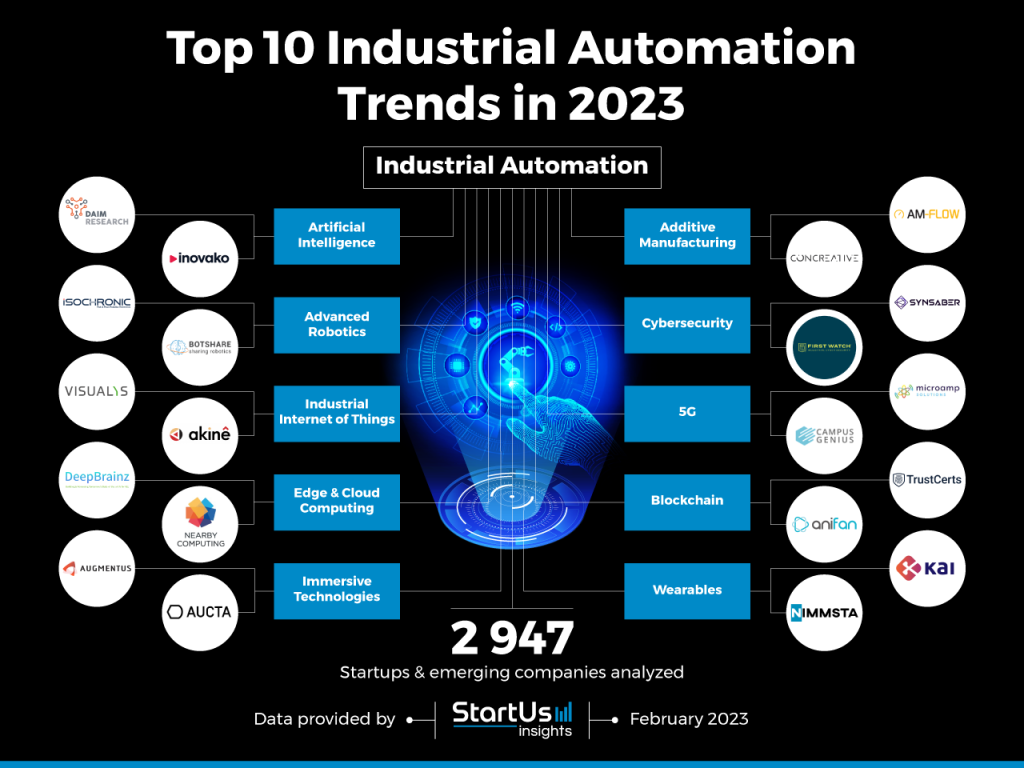Unveiling The Futuristic World Of Latest Technology Trends In Industrial Automation: Embrace The Wave Of Innovation Now!
Latest Technology Trends in Industrial Automation
Introduction
Dear Readers,
Welcome to our article on the latest technology trends in industrial automation. In this rapidly evolving digital era, technological advancements have revolutionized the way industries operate. Automation has become a cornerstone of modern industrial processes, offering increased productivity, efficiency, and safety.
1 Picture Gallery: Unveiling The Futuristic World Of Latest Technology Trends In Industrial Automation: Embrace The Wave Of Innovation Now!

In this article, we will explore the cutting-edge technologies shaping the future of industrial automation. From the Internet of Things (IoT) to artificial intelligence (AI) and robotics, these trends are revolutionizing various sectors, including manufacturing, logistics, and energy.
Join us as we delve into the exciting world of industrial automation and discover how these innovative technologies are transforming industries worldwide.
What is Industrial Automation?
Industrial automation refers to the use of advanced technologies and control systems to optimize industrial operations. It involves the integration of machinery, software, and communication systems to automate processes and improve productivity.

Image Source: startus-insights.com
Automation technologies have significantly reduced human intervention in industrial processes, leading to enhanced efficiency, accuracy, and safety. By automating repetitive tasks, industries can achieve higher output levels, minimize errors, and mitigate operational risks.
Who is Driving the Automation Revolution?
The automation revolution is being driven by various stakeholders, including technology companies, industrial manufacturers, and governments. Tech giants such as Siemens, ABB, and Schneider Electric are at the forefront of developing innovative automation solutions.
Industrial manufacturers are also leveraging automation technologies to streamline their operations and gain a competitive edge. Governments around the world are promoting the adoption of automation to boost economic growth, create jobs, and improve national productivity.
When Did Industrial Automation Begin?
The roots of industrial automation trace back to the late 18th century with the advent of the Industrial Revolution. The introduction of steam power and mechanization marked the beginning of automated industrial processes.
However, it wasn’t until the 1970s that computer-based automation systems emerged, paving the way for the modern era of industrial automation. Since then, advancements in computing power, connectivity, and software development have accelerated the automation revolution.
Where is Industrial Automation Being Implemented?
Industrial automation is being implemented across a wide range of sectors and industries. Some of the key sectors embracing automation include manufacturing, logistics, agriculture, healthcare, and energy.
In manufacturing, automation technologies such as robotics and machine vision systems are revolutionizing production lines, enabling faster and more accurate assembly processes. In logistics, automated warehouses and autonomous vehicles are transforming supply chain operations.
Why is Industrial Automation Important?
Industrial automation is important for several reasons. Firstly, it allows industries to increase their productivity and output levels, leading to higher efficiency and profitability. By automating repetitive tasks, companies can free up human resources for more complex and creative roles.
Secondly, automation improves product quality and consistency by minimizing human errors and variability. It ensures that products meet high standards and customer expectations consistently.
Lastly, industrial automation enhances workplace safety by reducing the exposure of workers to hazardous environments and repetitive motions. By automating dangerous tasks, it minimizes the risk of accidents and injuries.
How is Industrial Automation Achieved?
Industrial automation is achieved through the integration of various technologies. These include robotics, artificial intelligence, machine learning, IoT, big data analytics, and cloud computing.
Robots play a crucial role in industrial automation, performing tasks with accuracy, speed, and reliability. AI and machine learning algorithms enable machines to learn from data and make intelligent decisions.
The IoT enables connectivity between machines, sensors, and control systems, facilitating real-time monitoring and control of industrial processes. Big data analytics and cloud computing provide the necessary infrastructure for storing and analyzing vast amounts of data generated by automated systems.
Advantages and Disadvantages of Industrial Automation
Advantages:
Increased productivity and efficiency
Improved product quality and consistency
Enhanced workplace safety
Cost savings through reduced labor and waste
Greater flexibility and scalability
Disadvantages:
Initial high implementation costs
Dependency on technology and potential system failures
Job displacement and the need for retraining
Privacy and security concerns
Resistance to change from employees
FAQs (Frequently Asked Questions)
Q1: How can industrial automation benefit small businesses?
A1: Industrial automation can benefit small businesses by increasing their productivity and efficiency, reducing operational costs, and enabling them to compete with larger companies on a level playing field.
Q2: What roles will humans play in automated industries?
A2: Humans will continue to play critical roles in automated industries, focusing on tasks that require creativity, problem-solving, and decision-making. They will oversee and manage automated systems, ensuring their optimal performance.
Q3: Can industrial automation lead to job losses?
A3: While automation may lead to job displacement in certain areas, it also creates new job opportunities. Workers can be upskilled and retrained to work alongside automated systems, taking on more complex and value-added roles.
Q4: How can industrial automation contribute to sustainability?
A4: Industrial automation can contribute to sustainability by optimizing resource usage, reducing waste, and improving energy efficiency. Automated systems can monitor and control energy consumption, leading to reduced environmental impact.
Q5: What are the key challenges in implementing industrial automation?
A5: Key challenges in implementing industrial automation include high upfront costs, integration complexities, the need for skilled labor, and addressing concerns about job displacement and privacy.
Conclusion
In conclusion, the latest technology trends in industrial automation are revolutionizing industries worldwide. From robotics and AI to IoT and big data analytics, these technologies offer unprecedented opportunities for increased productivity, efficiency, and safety.
While industrial automation presents challenges, such as job displacement and implementation costs, the benefits far outweigh the drawbacks. It is crucial for businesses to embrace these trends and invest in automation to stay competitive in the digital age.
Thank you for joining us on this journey into the world of industrial automation. We hope this article has provided valuable insights into the latest trends shaping the future of industries.
Final Remarks
Industrial automation is a transformative force that is reshaping industries and driving economic growth. As we move forward, it is essential to strike a balance between automation and human-centric approaches.
While automation offers numerous benefits, it is important to consider the potential social and economic impacts. Governments, organizations, and individuals must work together to ensure that automation is implemented responsibly and inclusively.
As technologies continue to evolve, it is crucial to stay updated and adapt to the changing landscape. Industrial automation is here to stay, and it is up to us to harness its potential for the betterment of society and the advancement of industries.
This post topic: Latest Technology Trends

